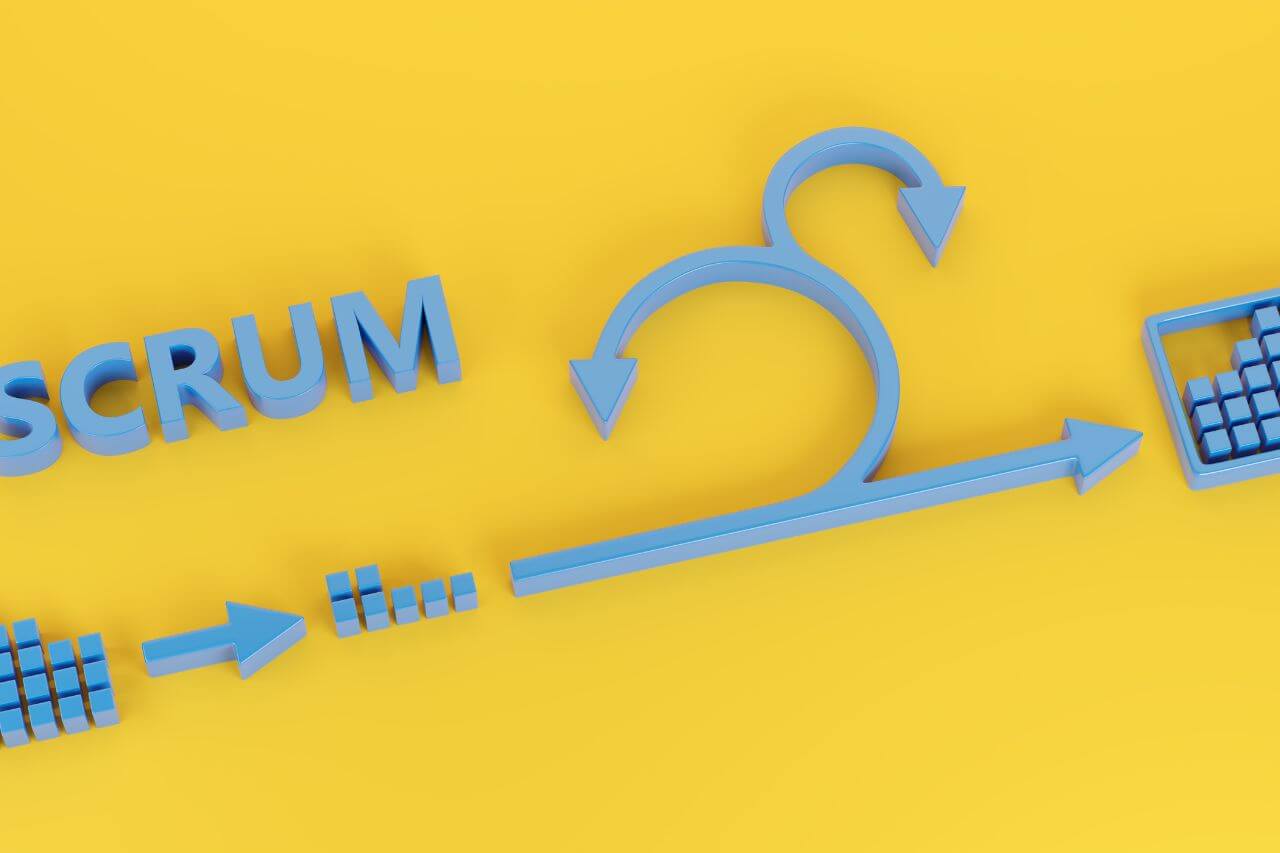Chances are you’re already familiar with Scrum which is a popular lightweight framework that uses the Agile methodology for managing and completing complex projects.
This framework has different elements with specific purposes that work in combination to provide the value that is expected from Scrum.
When it comes to tracking progress and guiding the development process, Scrum artifacts are elements that help in doing this.
In this article, we delve into a brief overview of Scrum, the Scrum artifacts, and tips on how to use them effectively for the development process.
What is Scrum?
Scrum is a lightweight agile framework for managing complex projects and providing adaptive solutions to them.
Developed in the mid-1990s, it has since become one of the most popular frameworks for the Agile world.
Scrum focuses on transparency and collaboration by leveraging cross-functional teams with members who work closely together to achieve a common goal.
This Scrum 101 guide will provide you with more in-depth knowledge of this framework.

What are Scrum Artifacts?
Scrum has a set of artifacts that help teams track progress and guide their work. These artifacts are information that provides details about the product to be developed.
According to the Scrum Guide, Scrum has three main artifacts. They are the Product Backlog, the Sprint Backlog, and the Product Increment.
These artifacts are very important to the Scrum framework as they ensure transparency of key information and help the team to stay focused on the most valuable work.
By using Scrum artifacts, the Scrum team can detail the product, and the actions to be taken to develop it.

The 3 Scrum Artifacts
As iterated in the previous section, Scrum has 3 main artifacts which are the Product Backlog, Sprint Backlog, and the Product Increment.
These artifacts each have a commitment that the artifact can be measured against to see the progress.
We’ll take a detailed look into these artifacts and their individual commitments.
Product Backlog
The Product Backlog is a prioritized list of features, user stories, or requirements for the product ordered according to their priorities.
It’s a living document that is continuously updated and refined as new information becomes available, and its commitment is the Product goal.
The Product Backlog contains all features for the product being developed, and the product Goal is the expected future state of the product.
The Product Backlog is owned and managed by the Product Owner, who is responsible for maximizing the value of the product.
The Product Owner plays a critical role in managing the Product Backlog by ensuring the Product Backlog is clear, concise, and prioritized.
The contents of the Product Backlog must also be communicated to the Developers and stakeholders clearly by the Product Owner.
Sprint Backlog
The Sprint Backlog is a list of items from the Product Backlog that the Developers plan to work on during the current Sprint.
At the beginning of each Sprint during the Sprint Planning event, the Developers pick items from the Product Backlog that they estimate can be completed within the Sprint.
These Product Backlog items form the Sprint Backlog, and the commitment is the Sprint Goal.
The Sprint Backlog is owned and managed by the Developers who are responsible for forecasting the work they will complete during the Sprint.
The Developers have quite a number of responsibilities when it comes to managing the Sprint Backlog.
They’re responsible for forecasting the work they will complete during the Sprint and breaking down the work into smaller, manageable chunks.
They also track progress during the Sprint and make any necessary adjustments to the Sprint Backlog as needed.

Product Increment
The Product Increment is the third main artifact. It’s the result of each Sprint and is an important part of the development process.
The Product Increment is a usable, potentially shippable product increment that is the sum of all the Product Backlog items completed during the Sprint and all previous Sprints.
In other words, it’s the product at a given point in time, with all the features and functionality that have been completed up to that point and its commitment is the Definition of Done (DoD).
Each Product Increment is in addition to all overall previous Increments and they are to work together seamlessly.
The Increment is created from completed Product Backlog items, which means that it represents the work that has been done to date.

Scrum Artifacts Use
Each artifact has a vital role to play in the product development process. For them to do this, they have to be used as effectively as possible.
How to use the Product Backlog Effectively
To use the Product Backlog effectively, these are a few tips:
1. Keep it clear and concise: The Product Backlog should be easy to understand and should not contain too much detail.
2. Prioritize items: The Product Backlog should be prioritized, with the most important items at the top. This helps the development team focus on the most valuable work.
3. Communicate effectively: The Product Owner should communicate the contents of the Product Backlog to the development team and other stakeholders regularly.
4. Refine and prioritize items as needed: The Product Backlog is a living document, and the Product Owner should work with the development team to refine and prioritize items as necessary.
How to Use the Sprint Backlog Effectively
To use the Sprint Backlog effectively, here are a few tips:
1. Forecast work accurately: The Developers should be realistic about the work they can complete during the Sprint and should not overcommit.
2. Break down work into smaller chunks: By decomposition of the work into smaller chunks, the team can better track progress and identify any issues that might arise.
3. Track progress regularly: The Developers should track progress regularly during the Sprint and make any necessary adjustments to the Sprint Backlog as needed.
4. Communicate effectively: The Developers should communicate with the Product Owner and other stakeholders about the work being done and any issues that might arise.
How to Use the Product Increment Effectively
Here are a few tips for the effective use of the Product Increment:
1. Demonstrate the Increment to stakeholders: By demonstrating the Increment to stakeholders at the end of each Sprint, you can get valuable feedback and make any necessary adjustments.
2. Use the Increment to measure progress: The Increment is a tangible representation of the work that has been done, so it’s a great way to measure progress and see how far you’ve come.
3. Use the Increment as a starting point for future work: The Increment is a usable, potentially shippable product, so you can use it as a starting point for future work.
4. Consider the Increment in your planning: When planning future Sprints, take into account the features and functionality that have been completed in previous Increments.
Benefits of Scrum Artifacts
Here are some ways in which the Scrum artifacts are beneficial to the product development process.
1. Visibility and Transparency
They provide a clear and comprehensive view of the project’s progress, including completed and pending work, as well as any roadblocks or challenges that have arisen during the project.
This allows team members to stay informed about the project’s status and make informed decisions about how to move forward.
2. Improved Communication and Collaboration
They facilitate communication and collaboration among team members, as well as between the team and stakeholders.
This can help team members stay on the same page and ensure that everyone is working towards the same goals.
3. Enhanced Accountability
They help members of a Scrum team to hold one another accountable for their work, as they provide a clear record of what has been completed and what still needs to be done.
This can help team members stay focused and motivated, as they can see the individual and collective progress they are making toward the project’s goals.
4. Increased Efficiency
By providing a clear roadmap for the project, the Scrum artifacts can help the teams to work more efficiently and effectively.
For instance, the Product Backlog can help team members prioritize their work, while the Sprint Backlog can help them focus on the most important tasks.
This can help Scrum teams deliver results more quickly and with fewer errors.
5. Improved Adaptability
They allow teams to be more agile and adaptable, as they provide a framework for regularly reviewing and adjusting the project’s direction.
This can help teams respond to changing circumstances and deliver better results.
Conclusion
In conclusion, Scrum artifacts are an integral part of the Scrum framework and are crucial for tracking progress and guiding work.
By using them effectively, teams can maximize the value of the product, deliver high-quality products, and guide their work efficiently and effectively.
FAQs
Which Scrum Artifacts Provide Transparency and Opportunities for Inspection and Adaptation?
The Scrum Artifacts that provide transparency and opportunities for inspection and adaptation are the Product Backlog, Sprint Backlog, and Product Increment.
Who Should the Scrum Master Work with to Determine if Artifacts are Completely Transparent?
The Scrum Master should work with the Developers, Product Owner, and other stakeholders to determine if Scrum artifacts are completely transparent.
Must all Scrum Artifacts be Transparent?
Yes, all Scrum artifacts must be transparent, meaning they must be visible and accessible to all stakeholders, to ensure effective communication and collaboration within the Scrum framework.
How Should Scrum Teams Plan Work to be Performed within Sprints?
Scrum Teams should plan work to be performed within sprints by using the Sprint Backlog, which is a list of items from the Product Backlog that the team has committed to deliver during the current sprint.
The team should plan and prioritize the items in the Sprint Backlog to ensure they are delivering the highest-value items first.





